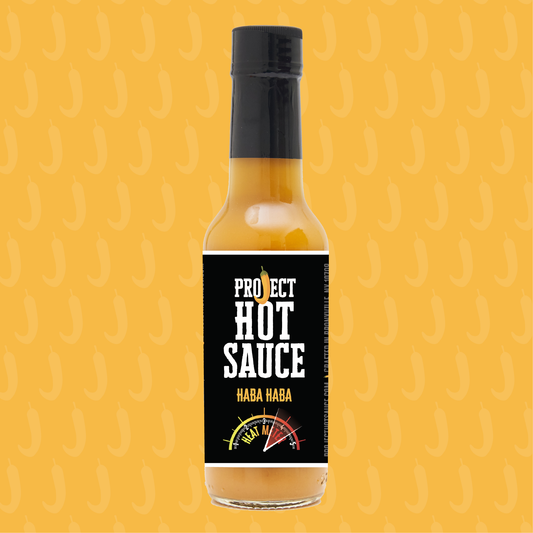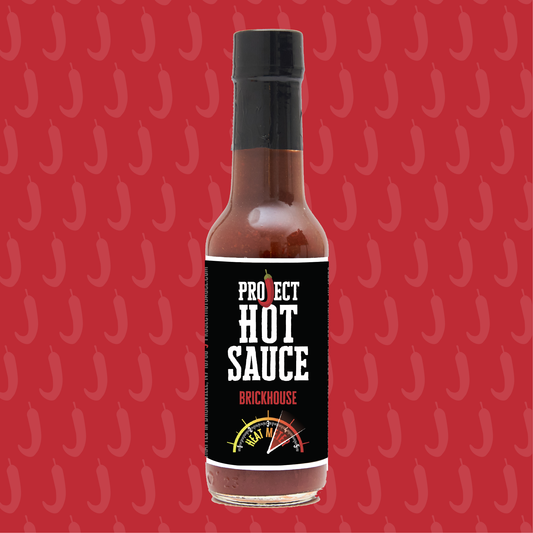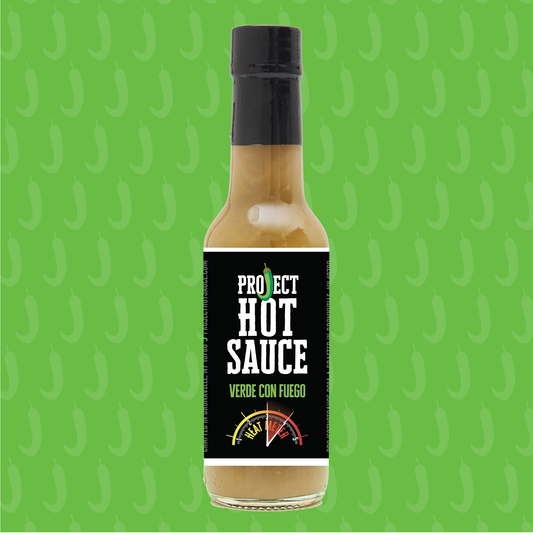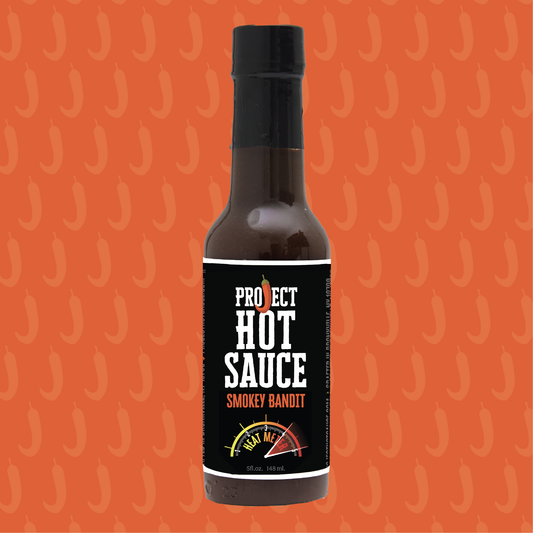Creating exceptional small batch hot sauce requires balancing traditional techniques with innovative approaches, transforming fresh peppers into complex condiments that showcase both the maker's skill & the natural character of their ingredients. This artisanal process differs significantly from industrial production methods that prioritize efficiency over quality.
Selecting the Right Peppers Sets the Foundation
Successful small batch hot sauce begins with selecting appropriate pepper varieties that complement each other & support the desired flavor profile. Experienced makers consider factors including heat level, flavor characteristics, growing conditions, & seasonal availability when planning their recipes.
Different pepper varieties contribute distinct qualities beyond simple heat intensity. Serranos provide grassy, bright notes that work well in fresh salsas, while chipotle peppers add smoky depth suitable for barbecue applications. Habaneros bring fruity sweetness that balances their significant heat, making them excellent for tropical-inspired blends.
Understanding pepper maturity stages allows makers to create products with varying characteristics from the same plant varieties. Green peppers typically offer sharper, more herbaceous flavors, while fully ripe red peppers provide sweeter, more complex taste profiles. Some producers create multiple products from single pepper varieties by harvesting at different maturity stages.
Sourcing Considerations
Working with local farms enables small batch producers to request specific pepper varieties or growing conditions that support their product goals. This collaboration often results in pepper strains or specialized growing techniques that create distinctive flavor characteristics unavailable from commercial suppliers.
Quality assessment requires understanding visual indicators, texture characteristics, & aromatic profiles that distinguish premium peppers from inferior alternatives. Experienced producers develop relationships with growers who share their quality standards & production philosophies.
Pepper Preparation Techniques
Proper handling after harvest affects final product quality through temperature control, cleaning procedures, & storage methods. Rapid processing preserves volatile compounds while preventing deterioration that can compromise flavor or safety.
Pre-processing decisions about stemming, seeding, or roasting peppers significantly impact final sauce characteristics. Each technique offers advantages for specific applications while requiring different equipment & skill levels.
Balancing Acidity & Preservation Methods
Achieving proper acidity levels ensures food safety while supporting desired flavor development. Small batch producers typically use vinegar combinations that complement their pepper selections, choosing between white distilled, apple cider, rice, or specialty vinegars that enhance rather than mask pepper flavors.
Natural fermentation processes can develop complex flavor compounds while creating the acidic environment necessary for safe preservation. Controlled fermentation requires careful monitoring of temperature, pH levels, & microbial activity to ensure consistent results while preventing unwanted bacterial growth.
Some artisanal producers incorporate citrus juices or other natural acids that contribute flavor while meeting safety requirements. These ingredients must be balanced carefully to avoid overwhelming the pepper characteristics that define the product's identity.
pH Management
pH testing equipment enables small batch producers to verify their products meet safety standards while maintaining desired flavor profiles. This scientific approach ensures consistency between batches while supporting the artistic elements of recipe development.
Understanding how different ingredients affect acidity helps producers achieve target pH levels without compromising flavor balance. Some ingredients naturally lower pH while others require acid additions to reach safe preservation levels.
Fermentation Control
Temperature control during fermentation affects both safety & flavor development. Consistent temperatures promote desired microbial activity while preventing harmful bacteria that could compromise product safety or quality.
Salt concentrations influence fermentation rates & flavor development while providing antimicrobial effects that support food safety. Different salt types contribute varying mineral profiles that can enhance or detract from pepper characteristics.
Texture Development Through Processing Techniques
Achieving optimal texture requires understanding how different processing methods affect pepper cell structure & sauce viscosity. Hand-chopping creates rustic textures that showcase individual pepper pieces, while blending produces smooth consistencies that highlight flavor integration.
Food mill processing creates intermediate textures that remove seeds & skins while maintaining some pepper structure. This technique works particularly well for sauces intended to complement rather than dominate other flavors in prepared dishes.
Heat application during processing affects both texture & flavor development. Raw processing preserves bright, fresh pepper characteristics, while cooking concentrates flavors & creates deeper, more complex taste profiles.
Equipment Selection
Different processing equipment produces varying texture results even when using identical ingredients & recipes. Understanding these differences allows producers to select appropriate tools for their desired outcomes.
Batch size considerations affect equipment choice & processing techniques. Small batches allow for hand-processing methods that might be impractical for larger production volumes but result in superior texture control.
Consistency Management
Achieving consistent texture between batches requires standardizing processing procedures while accounting for natural ingredient variations. This balance maintains artisanal character while meeting customer expectations for product consistency.
Quality control during processing helps identify texture issues before final bottling, allowing for adjustments that maintain product standards while minimizing waste.
Flavor Layering & Recipe Development
Creating memorable hot sauce requires building multiple flavor layers that work harmoniously together. Successful recipes typically include background flavors that support the peppers, bridge flavors that connect different elements, & accent flavors that provide distinctive character.
Salt selection impacts both preservation & flavor development. Sea salt, kosher salt, & specialty salts each contribute different mineral profiles that can enhance or detract from pepper characteristics. Understanding these nuances allows producers to fine-tune their recipes.
Aromatics like garlic, onion, ginger, or herbs must be processed appropriately to release their flavors without creating textural problems. Roasting, sautéing, or blanching these ingredients before incorporation often produces better results than using them raw.
Sweetening Strategies
Sweetening agents can balance excessive heat or acidity, but must be chosen carefully to avoid creating cloying flavors or stability issues. Natural sugars from fruits, vegetables, or honey typically integrate better than processed sweeteners while supporting overall flavor harmony.
Understanding how sweetness interacts with heat perception helps producers create balanced products that deliver satisfying flavor experiences without overwhelming sensitive palates.
Spice Integration
Additional spices beyond peppers can enhance complexity while supporting the primary pepper flavors. These additions require careful measurement & testing to ensure they complement rather than compete with the sauce's main character.
Timing of spice additions during processing affects their final impact on flavor & aroma. Some spices benefit from early incorporation while others work better as finishing touches.
Quality Control & Consistency Management
Small batch production requires establishing quality control procedures that ensure consistency while maintaining artisanal character. This includes standardizing ingredient measurements, processing times, & storage conditions that affect final product quality.
Sensory evaluation protocols help producers maintain flavor standards between batches. Regular tastings during production allow for adjustments before committing entire batches to final processing, reducing waste while ensuring customer satisfaction.
Documentation systems track recipe variations, processing conditions, & customer feedback that inform future production decisions. This information becomes valuable for scaling successful recipes or troubleshooting problems that arise during production.
Temperature Monitoring
Temperature control during production, bottling, & storage affects flavor development & product stability. Small batch producers often invest in precise temperature monitoring equipment to ensure optimal conditions throughout their process.
Understanding how temperature variations affect different ingredients helps producers maintain consistency while adapting to seasonal changes or equipment variations.
Batch Records
Detailed record-keeping enables producers to replicate successful batches while identifying factors that contribute to quality variations. These records become increasingly valuable as production volumes grow & recipe refinement continues.
Tracking customer feedback alongside production records helps identify correlations between processing variations & market reception, informing future production decisions.
Packaging & Presentation Considerations
Container selection affects both product preservation & customer experience. Glass bottles provide excellent flavor protection & premium presentation, while plastic containers offer convenience & reduced shipping costs for certain market segments.
Labeling design communicates product positioning & provides required regulatory information while attracting customer attention. Small batch producers often invest heavily in distinctive label designs that differentiate their products in competitive markets.
Fill levels, cap selection, & sealing procedures impact product freshness & customer satisfaction. Proper techniques prevent oxidation, contamination, & leakage that could damage the producer's reputation & result in customer complaints.
Storage Recommendations
Storage recommendations help customers maintain product quality after purchase. Clear instructions about refrigeration, usage timeframes, & proper handling extend product enjoyment while reducing the likelihood of quality issues.
Understanding how packaging materials interact with hot sauce ingredients over time helps producers select appropriate containers & develop accurate shelf-life recommendations.
Brand Communication
Package design elements communicate brand values & production quality to potential customers. Consistent visual identity across product lines helps build brand recognition while conveying professionalism & attention to detail.
Information hierarchy on labels ensures customers can quickly find important details like heat levels, ingredients, & usage suggestions while maintaining attractive visual presentation.
Project Hot Sauce demonstrates how thoughtful attention to each step in the small batch production process creates products that stand apart from mass-market alternatives, combining traditional craftsmanship with modern food safety practices to deliver exceptional hot sauces that reflect the maker's passion & skill.





